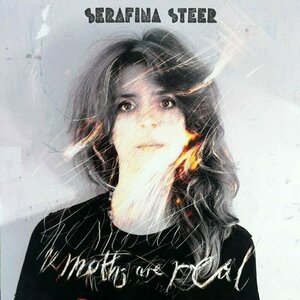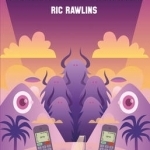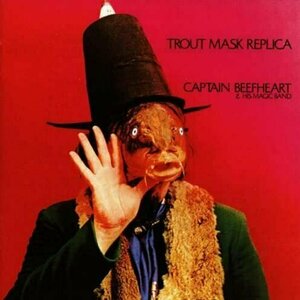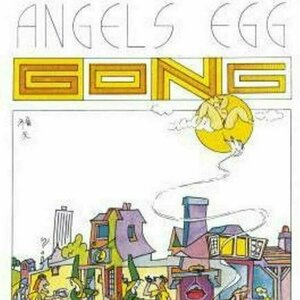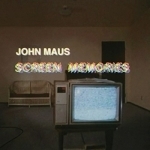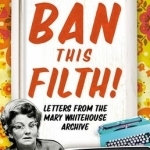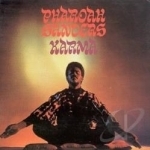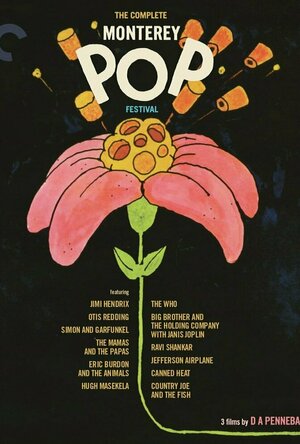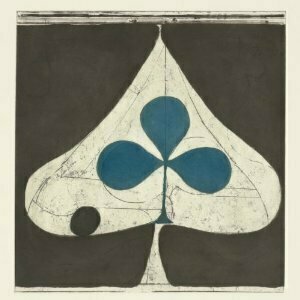"Most people think that the concert at Altamont was the antithesis of Woodstock. But one of my students at UCSB recently commented that you could tell a lot about what went wrong at Altamont by watching what went right at Monterey. I couldn’t agree more . . . It’s fascinating to watch both of these films and compare what happened just a few years and less than a hundred miles apart.
First off, Monterey Pop, which may be my favorite of all Criterion DVD packages. The booklet is printed on nature-rough hippy-grade paper stock that you would have first encountered on the streets of Haight-Ashbury, in the form of a free press or psychedelic poster on a telephone pole, and later on your thrift-store coffee table with a pile of pot about to be rolled next to it! Yes, it is this evocative!
The DVD box set includes amazing outtake performances with Laura Nyro, Quicksilver Messenger Service, TINY TIM (!), and Buffalo Springfield . . . and another DVD, Jimi Plays Monterey and Shake! Otis at Monterey, contains the complete performances by Jimi Hendrix and Otis Redding (with commentary by the ever-enlightening Peter Guralnick, who knows the history of Memphis musicians better than anyone alive).
The accompanying doc of a conversation between record producer Lou Adler and filmmaker D. A. Pennebaker is such a coup—not only do you hear how the concert came together and how it was organized during the entire event, but you also get to hear Lou Adler’s story. A lot of people don’t know (although smarty-pants me did) that Adler started his music career with Herb Alpert, as songwriting and producing partners . . . and he has awesome stories of Paul McCartney hanging out at Cass Elliot’s house in Laurel Canyon . . . There’s endless music-nerd gold like that!
The color in the film is all that psychedelia had to offer—vibrant, otherworldly, and hyperreal. There’s an innocence throughout Monterey Pop that exceeds the “positive vibes” of Woodstock a few years later and that is of course completely nonexistent in Gimme Shelter. You can also see in Monterey Pop the cops in the crowd (who were replaced by Hells Angels at Altamont) and SEATING! My student pointed out there were folding chairs on the lawns at Monterey—very civilized. Now that wasn’t throughout the concert grounds, but it was more in the tradition of the Newport Folk Festival than the mayhem to follow in Altamont. Also like Newport, the performers were in the audience—they were not in some rarefied backstage area, cut off from the fans or their fellow performers—and you get to see the moment when Mama Cass Elliot in the audience has her mind blown by the powerful performance of young Janis Joplin.
There’s a fabulous interview with Papa John Phillips, who cofounded the event with Adler, and a gorgeous photo exhibit by photographer Elaine Mayes.
Gimme Shelter director Albert Maysles was one of seven cameramen on Monterey Pop. And I need to point out that you do see a few Hells Angels on the lawn toward the end of Monterey Pop. So the Angels already had a presence at large outdoor rock events that far back.
I’ve talked to a lot of people who were at Altamont as performers, friends of bands, and audience members, and the consensus is that nothing in this film was manipulated in the least: the vibe was bad from the very start, and the filmmakers didn’t create that in the editing room. Interestingly, the film is shot much darker than the saturated colors in Monterey Pop—but then again colors were becoming less vibrant in pop culture and fashion at that time too.
But interestingly—here you have some of the same players—you have Jefferson Airplane, who are almost humble on the Monterey Pop stage (despite the fact that Grace Slick shows off her powerful rock pipes at Monterey—she was the first true female rock singer and very underrated in my opinion), having to stop their set at Altamont when singer Marty Balin is dragged off the stage and beat up by the Hells Angels. The Grateful Dead play a soothing jam at Monterey and don’t even make it to the stage at Altamont. Chris Hillman with the Byrds plays an evening set to the Monterey audience, and in Gimme Shelter his band, the Flying Burrito Brothers, only get two songs done before the mayhem drives them off the stage at the Speedway.
Watching Charlie Watts listening to the interviews with the promoter and with Hells Angel Sonny Barger makes Watts your favorite member of the band if he wasn’t already . . . His quiet devastation over the murder at his band’s concert is profound to witness (and you do feel as though you are let in on a very private event)."
Source
